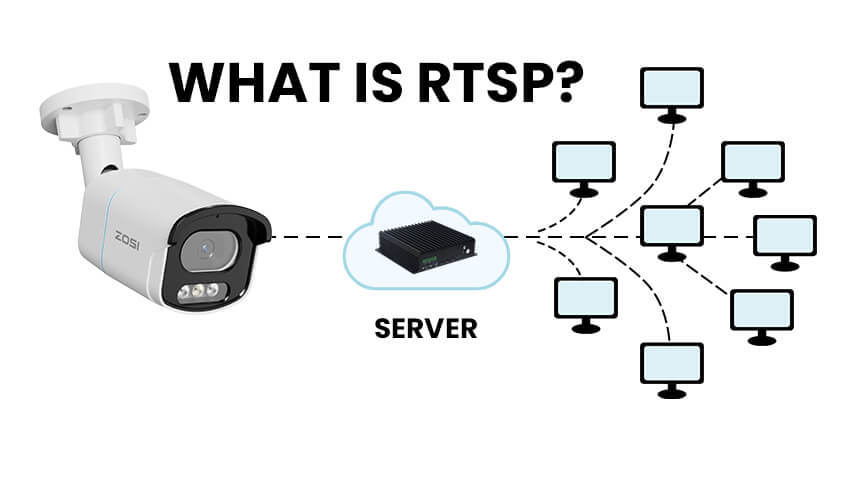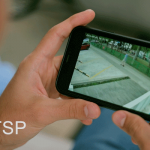| In the realm of IP-based video surveillance, the ability to stream real-time footage efficiently and flexibly is essential. Whether you’re viewing a live camera feed on a local network or integrating video into a professional monitoring setup, one key technology makes it all possible: RTSP.
In this article, we’ll explore what RTSP is, how it works, and why it plays such a critical role in modern security camera systems. If you’re curious about live video streaming beyond mobile apps or cloud storage, this is your essential guide. Contents What Does RTSP Stand For?RTSP stands for Real-Time Streaming Protocol. Developed in the 1990s by RealNetworks and standardized by the Internet Engineering Task Force (IETF), RTSP is designed to control multimedia streams over IP networks. Unlike protocols that transmit data (such as RTP, the Real-time Transport Protocol), RTSP acts more like a remote control—it issues commands like: • Play • Pause • Record • Rewind • Seek This makes it an ideal protocol for applications where real-time control of video or audio is needed, especially in surveillance and video monitoring systems. How RTSP WorksRTSP doesn’t stream video directly. Instead, it manages the streaming session, coordinating how and when data is sent. The actual transmission is handled by RTP for media delivery and RTCP (Real-Time Control Protocol) for monitoring quality. A typical RTSP stream begins when a client—such as a media player or video management system—sends a request to a camera or media server. If authentication succeeds, the stream begins using RTP over UDP or TCP. Here’s an example of a typical RTSP stream URL: • rtsp:// – The protocol being used • username:password@ – Login credentials • 192.168.0.100 – IP address of the streaming device • :554 – Default RTSP port • /h264_stream – The specific stream path on the device Why RTSP Is Important in Video SurveillanceRTSP is widely used in security and surveillance applications because it allows direct, real-time access to video streams from IP cameras or network video recorders (NVRs). It plays a foundational role in custom surveillance setups. Key Use Cases: • Third-party software integration: Stream to applications like VLC Media Player, iSpy, Blue Iris, or Synology Surveillance Station. • NVR and NAS storage: Record footage directly to network devices without relying on cloud platforms. • Smart home systems: Integrate with DIY systems using Home Assistant, Node-RED, or other open-source platforms. • Remote monitoring: View real-time feeds from any location via desktop or mobile applications that support RTSP. Advantages of RTSPRTSP continues to be a preferred choice for video professionals and enthusiasts for several reasons: Universal Compatibility Low Latency Local and Remote Streaming Works Without the Cloud RTSP vs Other Streaming ProtocolsRTSP isn’t the only protocol used for video transmission. Here’s how it compares to some others: RTSP vs. HTTP/HTTPS • HTTP/HTTPS: Typically used for buffered video playback (e.g., YouTube), not suitable for real-time. RTSP vs. ONVIF • ONVIF is a broader standard covering device discovery, configuration, and streaming. RTSP vs. HLS (HTTP Live Streaming) • HLS breaks video into small segments and delivers them via HTTP, ideal for wide compatibility and buffering. How to Use RTSP in a Security Camera SystemTo use RTSP, you’ll need: 1. A camera or device that supports RTSP. 2. Access to the camera’s IP address and credentials. 3. A compatible media player or software system. Examples include: Example Setup: 1. Connect your camera to your network. Tip: Always set a strong password and avoid exposing RTSP streams to the public internet without protection. FAQsQ1: Is RTSP secure? Q2: Can RTSP be used over the internet? Q3: Can I record RTSP streams? Q4: Does every IP camera support RTSP? ConclusionRTSP is a powerful and flexible streaming protocol that enables real-time video transmission over IP networks. From home surveillance systems to enterprise-grade monitoring setups, RTSP offers the low latency, compatibility, and control needed for high-quality video streaming. While it may require a bit more technical know-how than plug-and-play solutions, the benefits are clear: more independence, better customization, and a broader range of integration options. Whether you’re a security professional or an enthusiast building your own system, understanding RTSP is a valuable step toward unlocking the full potential of your video surveillance equipment. |
What Is RTSP?

